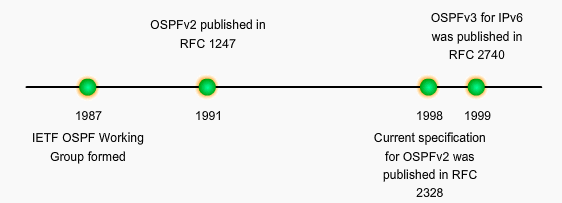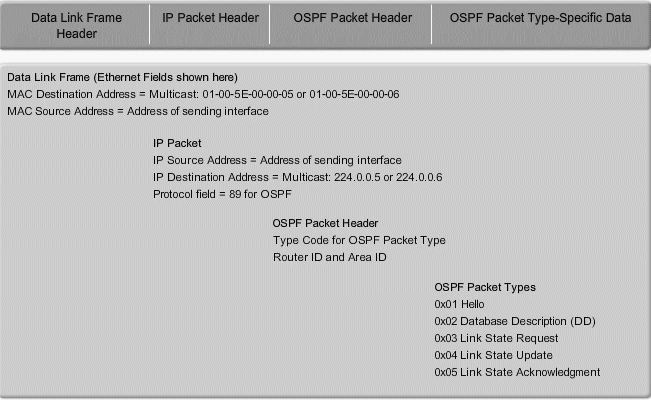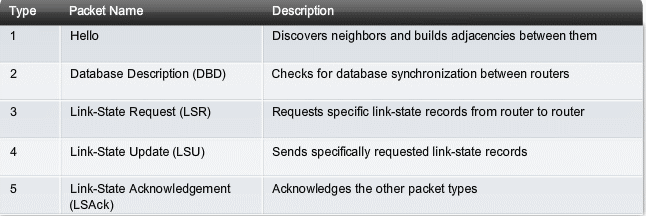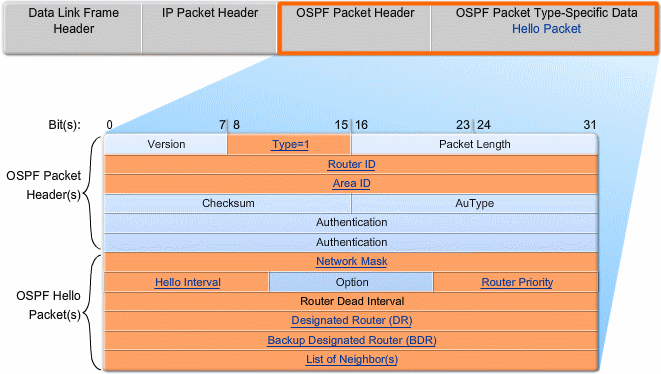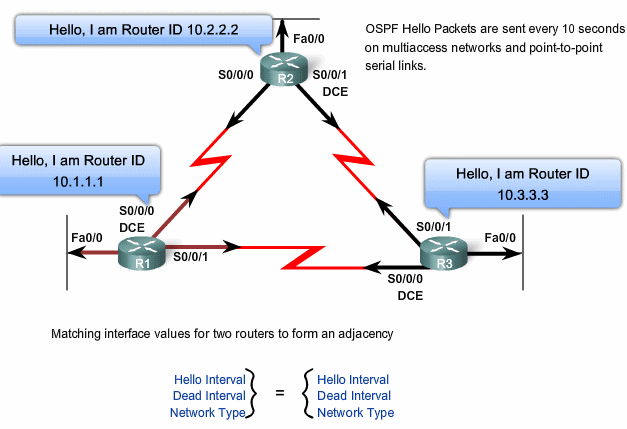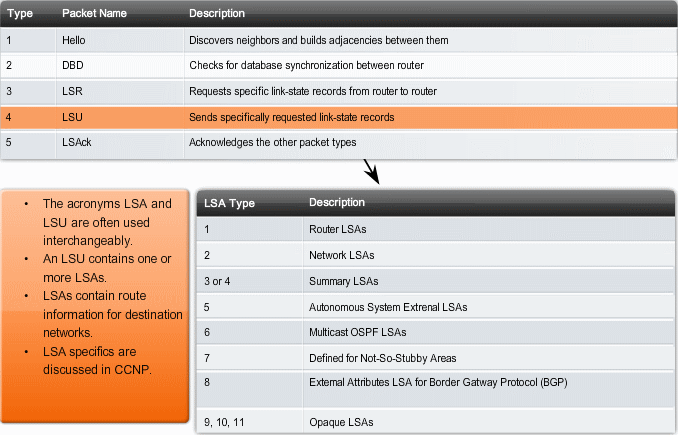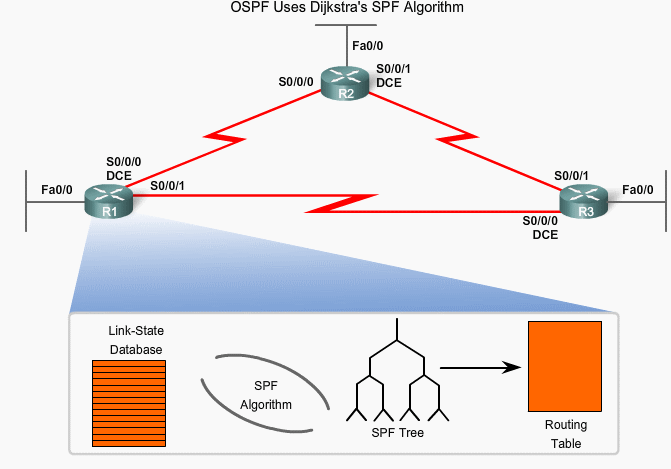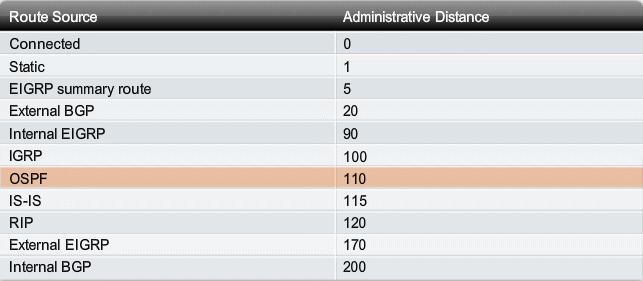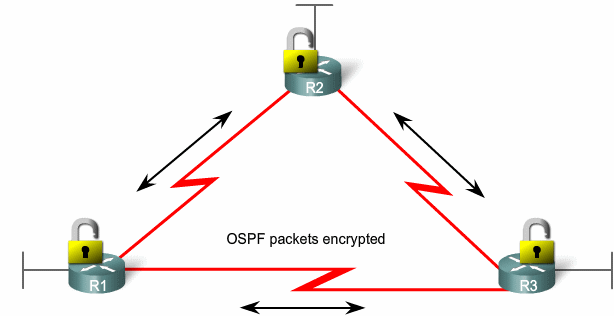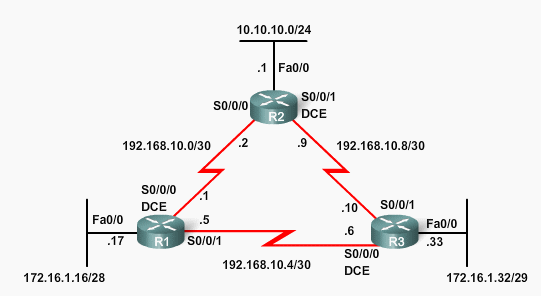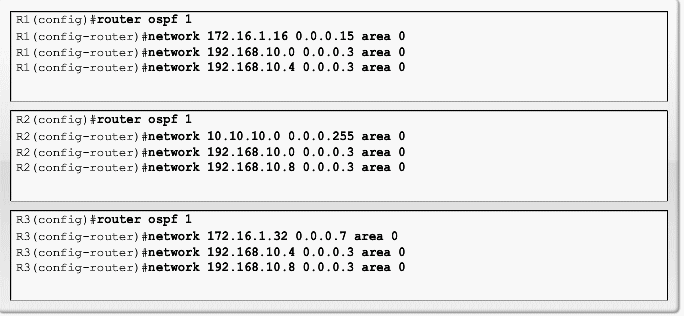Difference between revisions of "CCNA Explorer semester 2 kapitel 11"
m (New page: __TOC__ {| |800px|left|thumb|OSPF udviklings tidslinie |- |800px|left|thumb|Encapsulated OSPF Message |} = O...) |
m |
||
| Line 37: | Line 37: | ||
Hvis HELLO interval og DEAD interval ikke er ens på naboerne kan der ikke laves et ''adjacencie''. | Hvis HELLO interval og DEAD interval ikke er ens på naboerne kan der ikke laves et ''adjacencie''. | ||
| − | + | = Link State Updates = | |
| + | {| | ||
| + | |[[Image:Ccna explorer 2 chap 11 6.gif|800px|left|thumb|LSU'er indeholder ''Link State Advertisments'' LSA'er]] | ||
| + | |} | ||
| + | = OSPF algoritmen = | ||
| + | {| | ||
| + | |[[Image:Ccna explorer 2 chap 11 7.gif|800px|left|thumb|OSPF anvender Dijkstra's shortest path first (SPF) algorithm]] | ||
| + | |- | ||
| + | |[[Image:Ccna explorer 2 chap 11 8.gif|800px|left|thumb|OSPF administrativ afstand]] | ||
| + | |- | ||
| + | |[[Image:Ccna explorer 2 chap 11 9.gif|800px|left|thumb|OSPF authentication]] | ||
| + | |} | ||
| + | = OSPF eksempel = | ||
| + | {| | ||
| + | |[[Image:Ccna explorer 2 chap 11 10.gif|800px|left|thumb|Netværk]] | ||
| + | |- | ||
| + | |[[Image:Ccna explorer 2 chap 11 11.gif|800px|left|thumb|OSPF konfiguration]] | ||
| + | |- | ||
| + | |} | ||
| + | = OSPF Router ID = | ||
| + | {| | ||
| + | |[[Image:Ccna explorer 2 chap 11 10.gif|800px|left|thumb|Der er ingen Loopback interfaces konfigureret]] | ||
| + | |- | ||
| + | |} | ||
| + | # Use the IP address configured with the OSPF router-id command. | ||
| + | # If the router-id is not configured, the router chooses highest IP address of any of its loopback interfaces. | ||
| + | # If no loopback interfaces are configured, the router chooses highest active IP address of any of its physical interfaces. | ||
[[Category:CCNA]] | [[Category:CCNA]] | ||
Revision as of 08:35, 18 April 2010
OSPF Pakketyper
1. Hello - Hello packets are used to establish and maintain adjacency with other OSPF routers. The hello protocol is discussed in detail in the next topic.
2. DBD - The Database Description (DBD) packet contains an abbreviated list of the sending router's link-state database and is used by receiving routers to check against the local link-state database.
3. LSR - Receiving routers can then request more information about any entry in the DBD by sending a Link-State Request (LSR).
4. LSU - Link-State Update (LSU) packets are used to reply to LSRs as well as to announce new information. LSUs contain seven different types of Link-State Advertisements (LSAs). LSUs and LSAs are briefly discussed in a later topic.
5. LSAck - When an LSU is received, the router sends a Link-State Acknowledgement (LSAck) to confirm receipt of the LSU.
HELLO protocol
- Type: OSPF Packet Type: Hello (1), DD (2), LS Request (3), LS Update (4), LS ACK (5)
- Router ID: ID of the originating router
- Area ID: area from which the packet originated
- Network Mask: Subnet mask associated with the sending interface
- Hello Interval: number of seconds between the sending router's hellos
- Router Priority: Used in DR/BDR election (discussed later)
- Designated Router (DR): Router ID of the DR, if any
- Backup Designated Router (BDR): Router ID of the BDR, if any
- List of Neighbors: lists the OSPF Router ID of the neighboring router(s)
Mismatch OSPF timere
Hvis HELLO interval og DEAD interval ikke er ens på naboerne kan der ikke laves et adjacencie.
Link State Updates
OSPF algoritmen
OSPF eksempel
OSPF Router ID
- Use the IP address configured with the OSPF router-id command.
- If the router-id is not configured, the router chooses highest IP address of any of its loopback interfaces.
- If no loopback interfaces are configured, the router chooses highest active IP address of any of its physical interfaces.
